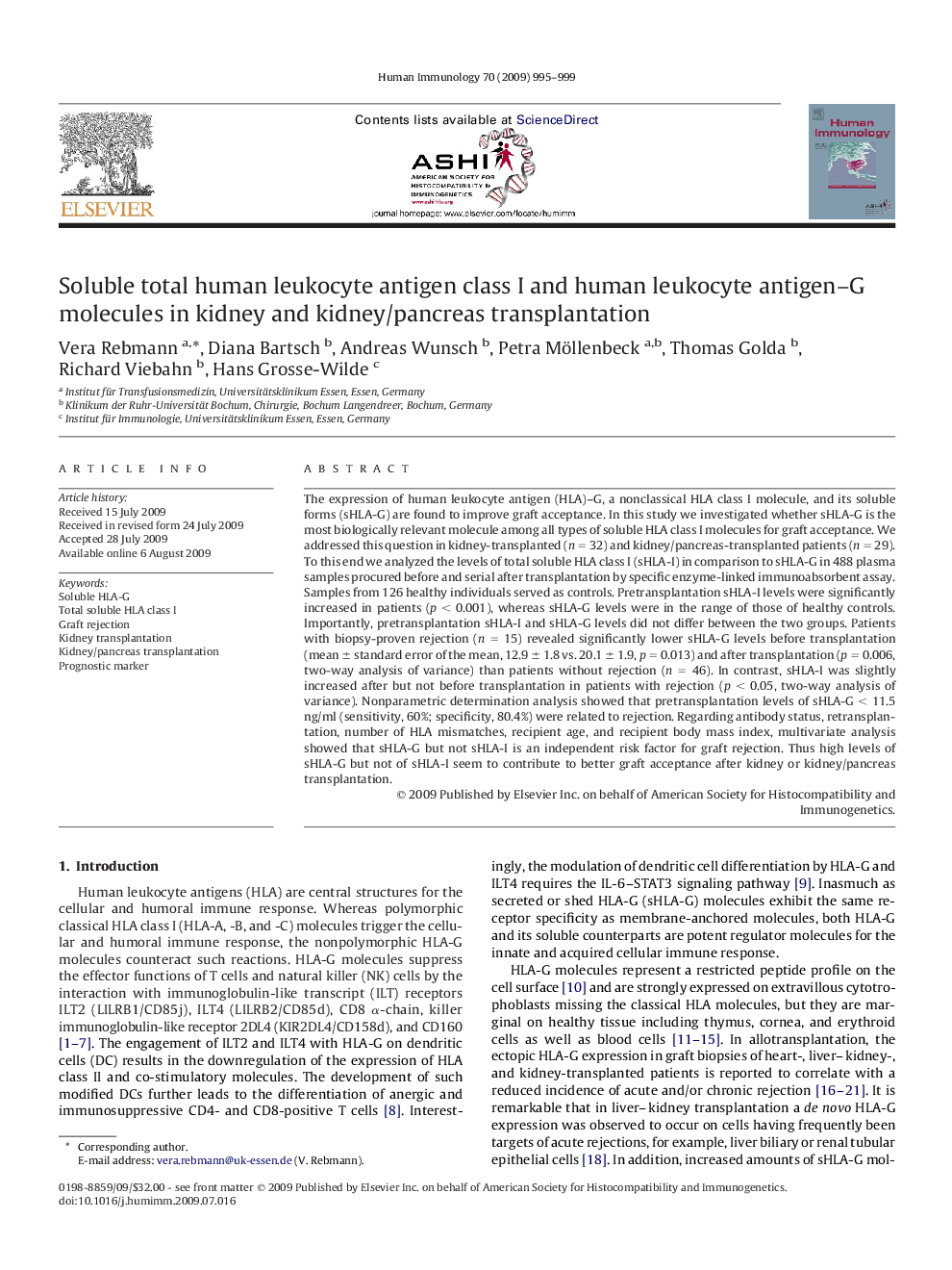| کد مقاله | کد نشریه | سال انتشار | مقاله انگلیسی | نسخه تمام متن |
|---|---|---|---|---|
| 3352015 | 1591378 | 2009 | 5 صفحه PDF | دانلود رایگان |

The expression of human leukocyte antigen (HLA)–G, a nonclassical HLA class I molecule, and its soluble forms (sHLA-G) are found to improve graft acceptance. In this study we investigated whether sHLA-G is the most biologically relevant molecule among all types of soluble HLA class I molecules for graft acceptance. We addressed this question in kidney-transplanted (n = 32) and kidney/pancreas-transplanted patients (n = 29). To this end we analyzed the levels of total soluble HLA class I (sHLA-I) in comparison to sHLA-G in 488 plasma samples procured before and serial after transplantation by specific enzyme-linked immunoabsorbent assay. Samples from 126 healthy individuals served as controls. Pretransplantation sHLA-I levels were significantly increased in patients (p < 0.001), whereas sHLA-G levels were in the range of those of healthy controls. Importantly, pretransplantation sHLA-I and sHLA-G levels did not differ between the two groups. Patients with biopsy-proven rejection (n = 15) revealed significantly lower sHLA-G levels before transplantation (mean ± standard error of the mean, 12.9 ± 1.8 vs. 20.1 ± 1.9, p = 0.013) and after transplantation (p = 0.006, two-way analysis of variance) than patients without rejection (n = 46). In contrast, sHLA-I was slightly increased after but not before transplantation in patients with rejection (p < 0.05, two-way analysis of variance). Nonparametric determination analysis showed that pretransplantation levels of sHLA-G < 11.5 ng/ml (sensitivity, 60%; specificity, 80.4%) were related to rejection. Regarding antibody status, retransplantation, number of HLA mismatches, recipient age, and recipient body mass index, multivariate analysis showed that sHLA-G but not sHLA-I is an independent risk factor for graft rejection. Thus high levels of sHLA-G but not of sHLA-I seem to contribute to better graft acceptance after kidney or kidney/pancreas transplantation.
Journal: Human Immunology - Volume 70, Issue 12, December 2009, Pages 995–999